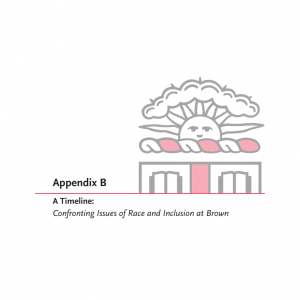On Feb. 1, 2016, Brown University President Christina H. Paxson shared with the Brown community Pathways to Diversity and Inclusion: An Action Plan for Brown University, a detailed action plan to create a more diverse and inclusive academic community. The action plan and its appendices, known as the DIAP, were developed as a strategic plan for realizing Brown’s commitment to diversity and inclusion as articulated in Building on Distinction: A New Plan for Brown, which was launched in 2014.
The plan built upon decades of the University confronting issues of racism, discrimination and non-inclusion throughout its history. Strong campus activism around issues of race at Brown and across the United States in 2015 coincided with the DIAP’s initially planned release in fall 2015 and informed the process for final development of the plan. The plan had been in development for more than a year, and its ultimate release followed more than two months of engagement with the Brown community of students, faculty, staff and alumni.
The University launched DIAP Phase II on March 30, 2021, five years after the adoption of the DIAP. The document re-commits to the goals established in the original action plan. DIAP Phase II does not replace the DIAP but rather is a companion of the original document. It includes new actions for the original DIAP goals and also lists actions that continue from the original plan.
